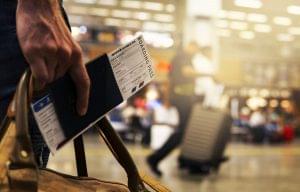Research: There is a huge gap between tourists’ environmental awareness and their actual travel habits
Although more and more tourists consider themselves environmentally conscious, this is less reflected in their travel habits, according to a recent international survey (Holiday Barometer) conducted by Europ Assistance covering 23 countries. According to the research, the majority of travelers would support sustainable practices, but environmental considerations are still taking a back seat when planning holidays. Carbon-intensive car use and flying continue to dominate, and the share of air travel has reached a four-year high: half of Europeans travel by plane. Travelers primarily seek to avoid places affected by natural disasters, and reducing their own ecological footprint is a less common consideration.
Tourists’ environmental intentions and actual behavior are contradictory
 According to the 24th edition of the Holiday Barometer, which examines holiday trends, although people are increasingly aware of environmental issues, they rarely take environmental considerations into account when planning their trips.
According to the 24th edition of the Holiday Barometer, which examines holiday trends, although people are increasingly aware of environmental issues, they rarely take environmental considerations into account when planning their trips.
A large majority of tourists say they would support sustainable travel practices. Across all regions, at least 80 percent would support local economies, and two-thirds would choose lower-carbon modes of transport or closer destinations to reduce their ecological footprint.
Eight out of ten European travellers would avoid activities that are socially irresponsible or disrespectful of local culture, environment and wildlife. More than 70 percent would be willing to travel out of season and would even choose buses, trains or other local public transport instead of cars or taxis.
However, Europ Assistance research shows that there is a significant gap between travellers’ intentions and their actual actions on environmental issues. While many people express good intentions and a willingness to adopt sustainable travel practices, this often falls short in reality.
Air travel hits 4-year high in Europe and North America
Despite environmental concerns, the most popular modes of transport continue to emit high levels of carbon dioxide. Air travel is on the rise, with half of all travellers in Europe (50%) and North America (52%). In addition, although fewer people travel by car, 48% of Europeans and 47% of North Americans still travel by car. Train travel has also increased in popularity compared to recent years, with more than a fifth of European tourists (22%) and 15% of North Americans using rail to reach their destinations, but this still lags behind the proportion of flights and cars.
According to the Holiday Barometer, environmental protection is taking a back seat when choosing a means of transport, with only a tenth of European travellers considering it a truly important factor. In contrast, comfort is the main consideration, with 57 percent of travelers in Europe and 61 percent in North Asia primarily choosing a particular mode of transport for this reason.
Related news
Experience, timing, awareness: a new travel logic is emerging towards 2026
🎧 Hallgasd a cikket: Lejátszás Szünet Folytatás Leállítás Nyelv: Auto…
Read more >Online Travel Expo introduced as a new digital professional platform
🎧 Hallgasd a cikket: Lejátszás Szünet Folytatás Leállítás Nyelv: Auto…
Read more >Tipping rate approaches 10% in Hungary
🎧 Hallgasd a cikket: Lejátszás Szünet Folytatás Leállítás Nyelv: Auto…
Read more >Related news
The GVH imposed fines of more than 3.7 billion forints on 29 companies in 2025
🎧 Hallgasd a cikket: Lejátszás Szünet Folytatás Leállítás Nyelv: Auto…
Read more >Hungary’s economy in 2025: recovery from slowdown, weaker forint and the increasing importance of corporate strategic decisions 2026 will be a test of resilience
🎧 Hallgasd a cikket: Lejátszás Szünet Folytatás Leállítás Nyelv: Auto…
Read more >NAK: it’s worth buying Hungarian sausages on New Year’s Eve too
🎧 Hallgasd a cikket: Lejátszás Szünet Folytatás Leállítás Nyelv: Auto…
Read more >






